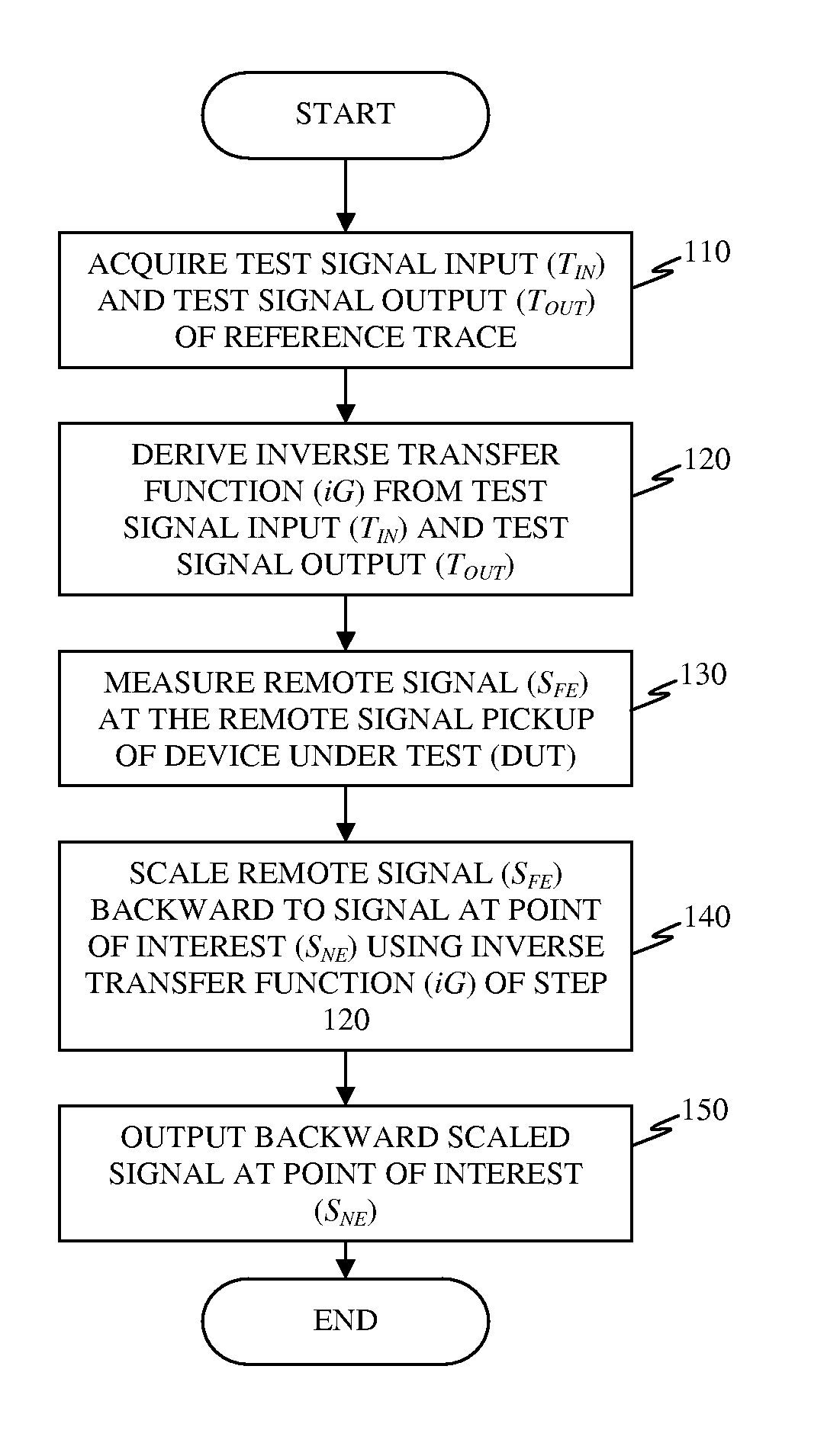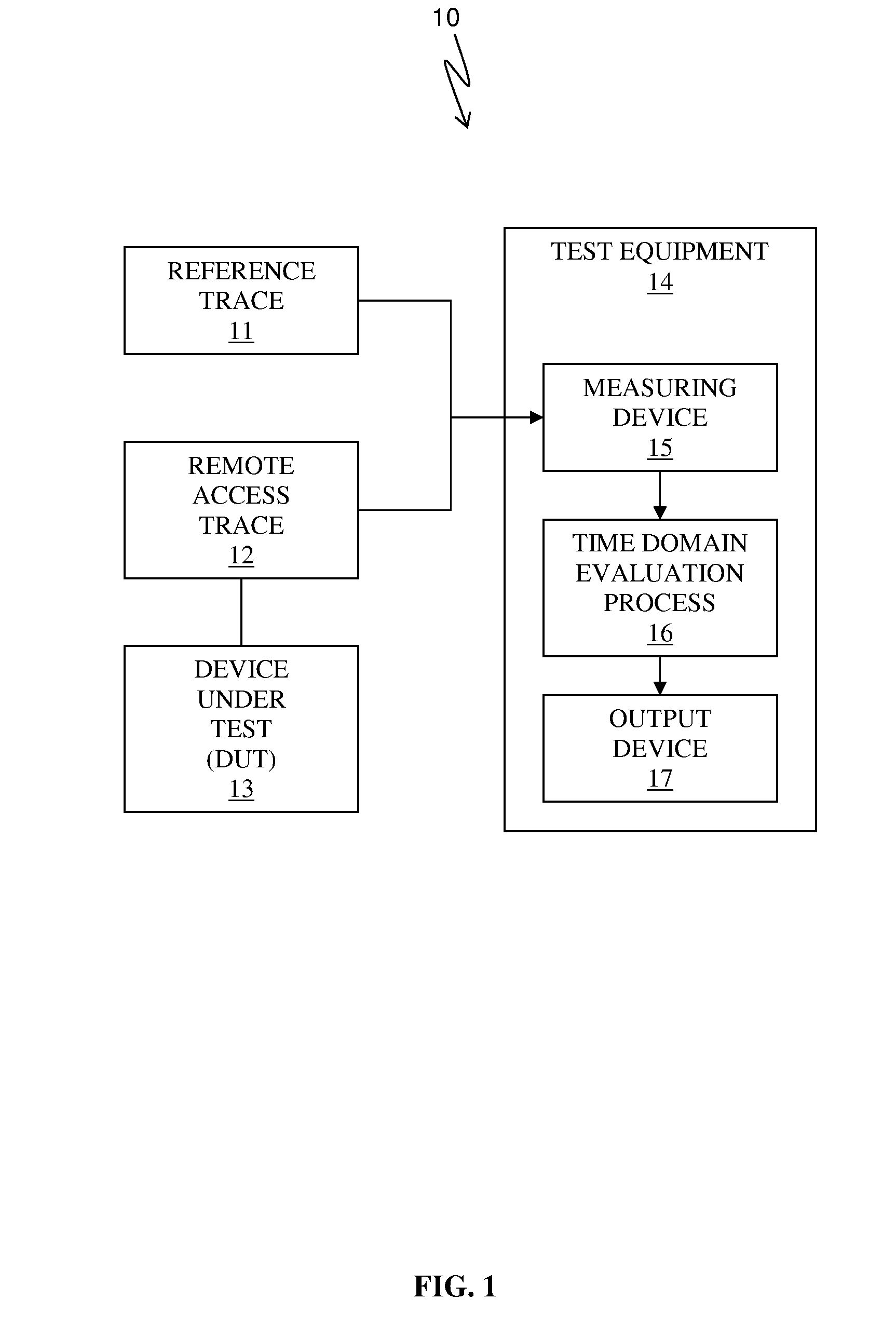System and method for evaluating high frequency time domain in embedded device probing
a high frequency time domain and embedded device technology, applied in the direction of measurement devices, noise figures or signal-to-noise ratio measurement, instruments, etc., can solve the problems of difficult or impossible to pick up test signals at the points of interest by direct manual probing, degradation along each signal trace may significantly affect electrical signal fidelity, and the inaccurate results of such direct manual probing cannot be easily overcome. , to achieve the effect of eliminating the effect of signal degradation
- Summary
- Abstract
- Description
- Claims
- Application Information
AI Technical Summary
Benefits of technology
Problems solved by technology
Method used
Image
Examples
Embodiment Construction
[0028]FIG. 1 illustrates a test probe system 10 for evaluating time domain signal data in an electrical device, in accordance with embodiments of the present invention. The test probe system 10 comprises a reference trace 11, a remote access trace 12, a device under test (DUT) 13, and a test equipment 14.
[0029]The reference trace 11 is an electrical signal path that is used to characterize and to simulate electrical properties of the remote access trace 12. See FIG. 1A, infra, for details of the reference trace 11.
[0030]The remote access trace 12 is another electrical signal path that is used to probe a high-frequency electrical signal at a point of interest on the device under test (DUT) 13, which has physical dimension and electrical properties that are equivalent to the reference trace 11. In this specification, the high-frequency electrical signal is any electrical signal of frequencies typically above 1 GHz. See FIG. 1B, infra, for details of the remote access trace 12.
[0031]Th...
PUM
 Login to View More
Login to View More Abstract
Description
Claims
Application Information
 Login to View More
Login to View More - R&D
- Intellectual Property
- Life Sciences
- Materials
- Tech Scout
- Unparalleled Data Quality
- Higher Quality Content
- 60% Fewer Hallucinations
Browse by: Latest US Patents, China's latest patents, Technical Efficacy Thesaurus, Application Domain, Technology Topic, Popular Technical Reports.
© 2025 PatSnap. All rights reserved.Legal|Privacy policy|Modern Slavery Act Transparency Statement|Sitemap|About US| Contact US: help@patsnap.com



